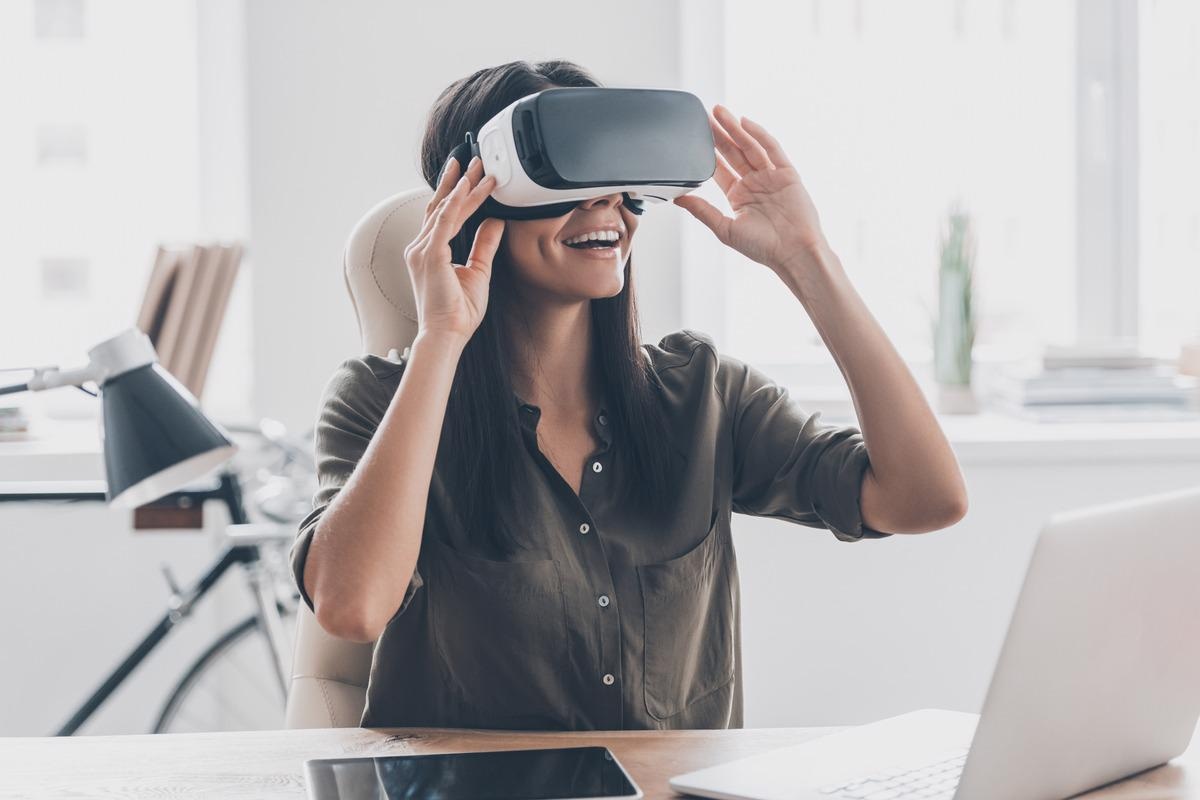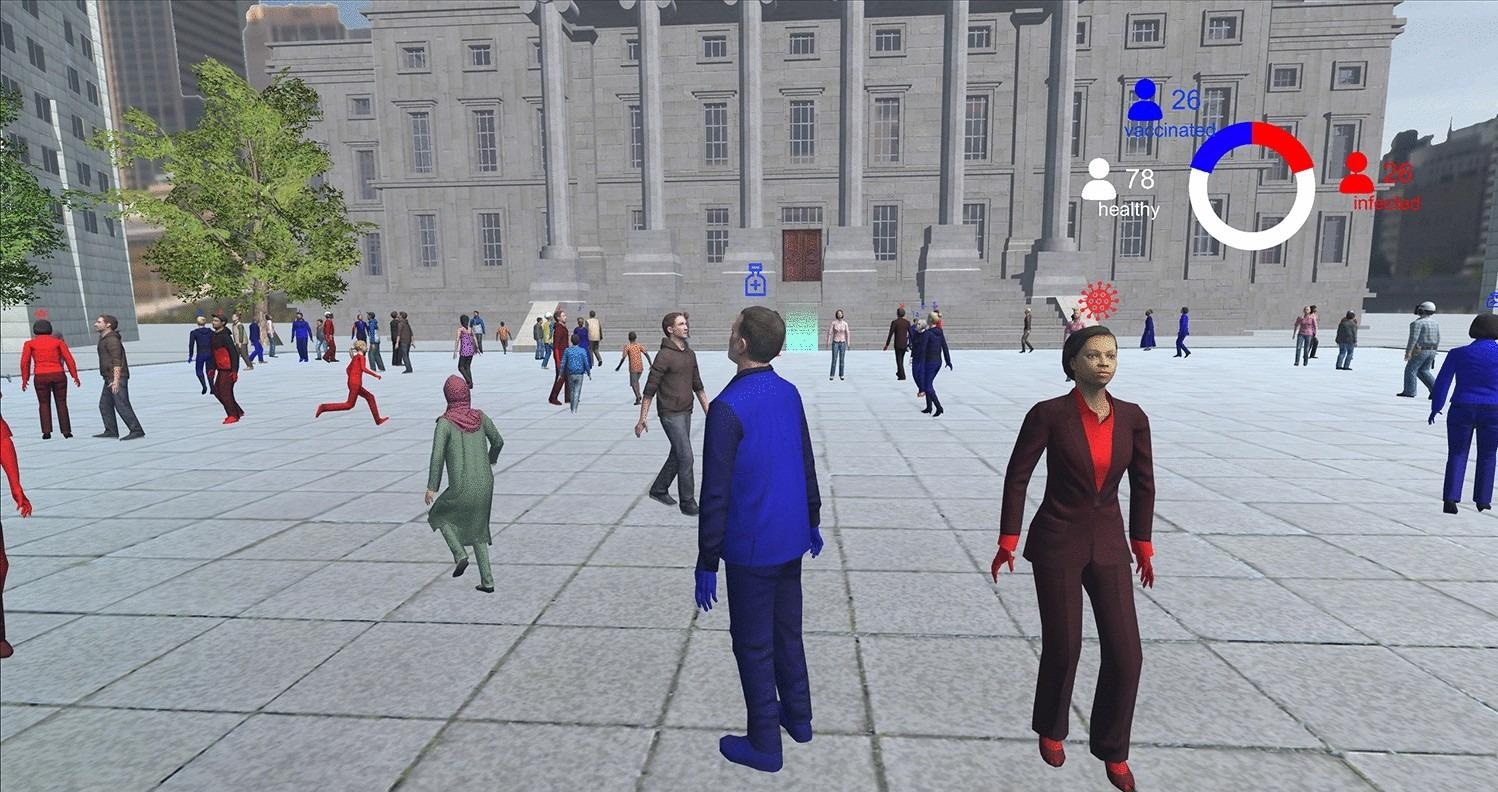Vaccination against infectious diseases is an individual decision that has positive externalities. Vaccinated individuals not only protect themselves against infection but also prevent the transmission of the virus to others. Thus, vaccination can indirectly help unvaccinated individuals get protected from infection, which is known as community immunity or herd immunity.

Study: Virtual reality reduces COVID‑19 vaccine hesitancy in the wild: a randomized trial. Image Credit: G-Stock Studio / Shutterstock.com
Background
For the current coronavirus disease 2019 (COVID-19) pandemic, several studies have estimated that between 60% to 90% of the population must be vaccinated to stop the spread of the causative pathogen, the severe acute respiratory syndrome coronavirus 2 (SARS-CoV-2). Unfortunately, vaccine hesitancy, which is defined as the reluctance to get vaccinated or delay in acceptance despite the availability of vaccines, remains a major obstacle in mitigating the COVID-19 pandemic.
Vaccine hesitancy can be affected by several factors such as lack of confidence in health authorities and experts who have developed the vaccine, constraints, complacency, the degree to which the personal costs and benefits of the vaccine are weighted, lack of compliance, lack of collective responsibility, and fake news regarding vaccines.
However, informing people about community immunity has occasionally been shown to increase intentions for vaccination. Thus, using novel technologies that can help people understand the benefit of vaccination, as well as the impact of vaccination on other vulnerable individuals, can assist in reducing vaccine hesitancy.
A new Scientific Reports study investigates whether intention for vaccination is increased by a gamified immersive virtual reality (VR) experience that shows how community immunity works.
About the study
The current study included participants who were passers-by at a public park in Copenhagen at the University of Copenhagen. All participants who understood basic English were eligible for the study.
Following the filling of a pre-treatment form, two-thirds of the participants were randomly assigned to the VR treatment. The remaining one-third were assigned to read texts and see images that explained community immunity. Thereafter, all participants were asked to complete a second post-treatment questionnaire.
 The busy square scene in VR, with a feedback graph showing the number of infected, healthy and vaccinated characters.
The busy square scene in VR, with a feedback graph showing the number of infected, healthy and vaccinated characters.
The participants undergoing the VR treatment were asked to wear an Oculus Quest headset for a five- to ten-minute simulation. Study participants were embodied as older character that matched their gender and was told that they were vulnerable to COVID-19.
The participants were assigned randomly to two versions of the VR simulation, avoid spreading, and avoid infecting. In the avoid spreading version, the VR character was already infected and was to avoid infecting others. Comparatively, in the avoid infecting version, the character was not infected and must avoid being exposed to infected characters.
For the first step, a tutorial helped to show the mechanics of the game. Healthy and unvaccinated characters wore red clothing, while healthy and vaccinated characters wore blue clothing. Infected characters could spread the virus by coming in close contact with healthy and unvaccinated characters. Close contact could be defined as a two meter radius around the character.
For the second step, participants crossed a busy square to reach a marked destination by avoiding contact with 130 characters in the square. In the first scenario, 20% of the characters in the square were vaccinated, while in the second scenario, 70% of the characters were vaccinated. Participants were made aware if they came into close contact with a character by vibrating controllers.
The alternative text-and-image treatment was defined as community immunity by the United States Centers for Disease Control and Prevention (CDC), which followed pictures with captions. The pictures represented communities where few or many people were vaccinated. Captions were used to explain that in a low-vaccination community, many healthy and unvaccinated individuals were at risk, while the risk was lower in a high-vaccination community.
In both test groups, two key outcomes were measured including intention for vaccination for a hypothetical new strain of the severe acute respiratory syndrome coronavirus 2 (SARS-CoV-2) and collective responsibility for COVID-19 vaccination.
Study findings
The VR treatment increased vaccination intention by 9.3 points and was found to be more effective than text-and-image treatment. Additionally, VR treatment also increased collective responsibility by 0.82 points and was more effective as compared to text-and-image treatment.
Vaccination intention for participants receiving the text-and-image treatment followed by VR treatment was further increased. Comparatively, no significant additional increase in vaccination intention was observed for those who received the text-and-image treatment after the VR treatment.
Furthermore, the two VR versions did not affect either vaccination intention or collective responsibility. Additionally, participants who completed the study stated that learning about community immunity through VR was more fun as compared to text and pictures.
Conclusions
The current study demonstrated that gamified VR provided a flexible tool for the creation of more engaging and interactive learning experiences. The application of VR in community immunity information is thus important in reducing vaccine hesitancy among the healthy population. Therefore, immersive VR has more potential than traditional communication channels in decreasing the threat of infectious diseases.
Limitations
It is not clear which aspects of the intervention might be modified by practitioners and which might be kept unchanged. A second limitation is that the effects on actual vaccination behavior were not investigated in any of the study participants.
VR interventions were also less feasible due to technological know-how and limited funds. Finally, many individuals who had a greater interest in VR could not participate in the study, as participants were randomly recruited from a park.
Journal reference:
- Vandeweerdt, C., Luong, T., Atchapero, M., et al. (2022). Virtual reality reduces COVID‑19 vaccine hesitancy in the wild: a randomized trial. Scientific Reports. doi:10.1038/s41598-022-08120-4.